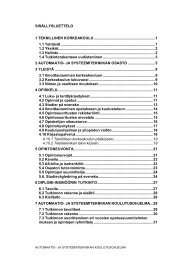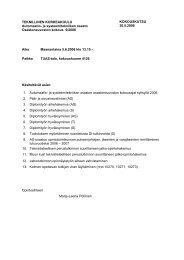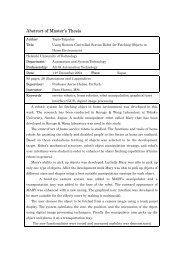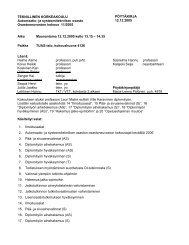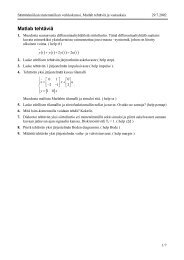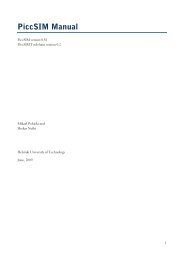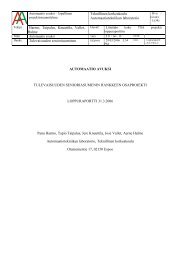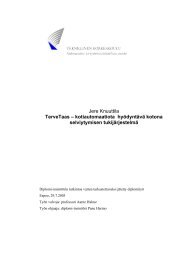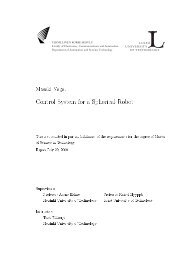fem modelling of a bellows and a bellows- based micromanipulator
fem modelling of a bellows and a bellows- based micromanipulator
fem modelling of a bellows and a bellows- based micromanipulator
You also want an ePaper? Increase the reach of your titles
YUMPU automatically turns print PDFs into web optimized ePapers that Google loves.
FEM <strong>modelling</strong> <strong>of</strong> a <strong>bellows</strong> <strong>and</strong> a <strong>bellows</strong>-<strong>based</strong> <strong>micromanipulator</strong>III. ModellingFigure 17Three-dimensionalmodel withSOLID45 element.The number <strong>of</strong>elements in thatcase reachesexactly 12'960,<strong>and</strong> that <strong>of</strong> thenodes 26'400.When solving a problem, the CPU-time consumption depends naturally on the number <strong>of</strong>equations the computer has to solve. The number <strong>of</strong> loads <strong>and</strong> boundary conditions don’t alterthe number <strong>of</strong> equations. At each node, there are as many equations as degrees <strong>of</strong> freedom,<strong>and</strong> they just aggregate the force equilibrium at that node. So each force applied on the solidmodel will just add a term to these equations, but that doesn’t augment significantly thecomputing duration. The number <strong>of</strong> equations is therefore directly 9 proportional to that one <strong>of</strong>the nodes constituting the mathematical model [Cook89].Accordingly to the three different meshes obtained with those solid models, it is evident thatone should work as much as possible with the two-dimensional one. Effectively, the amount<strong>of</strong> nodes is multiplied by the number <strong>of</strong> degrees <strong>of</strong> freedom per node in each case, thefollowing results are obtained:• 2'529 [nodes] · 3 [DOF] ≈ 7'600 equations for PLANE83-model• 12'124 [nodes] · 6 [DOF] ≈ 72'750 equations for SHELL43-model• 26'400 [nodes] · 3 [DOF] ≈ 79'200 equations for SOLID45-modelThe total expected difference in the CPU-time consumption between PLANE83 <strong>and</strong>SOLID45 models is about ten times. However approximately all needed loads <strong>and</strong> boundaryconditions can be applied in the two-dimensional problem. Consequently this point must bevalidated by applying the same conditions to each <strong>of</strong> the three mathematical models <strong>and</strong>check if the same results are obtained.To test every model correctly, including the one with shell elements, an homogenouspressure to the inner surface equal to 0,01 [mN/mm 2 ] is applied, with simple boundaryconditions to bottom surface: nodes can not move in y-direction, as shown by the next figure.yxFigure 18Boundary conditions <strong>and</strong> pressure applied to all threemodels, to check if the results are corresponding.9 Actually, that is not exact. Each boundary condition also adds some equations to the mathematical model, butin comparison with the amount <strong>of</strong> elements – <strong>and</strong> therefore <strong>of</strong> nodes – this small number <strong>of</strong> added equationsis negligible.17



